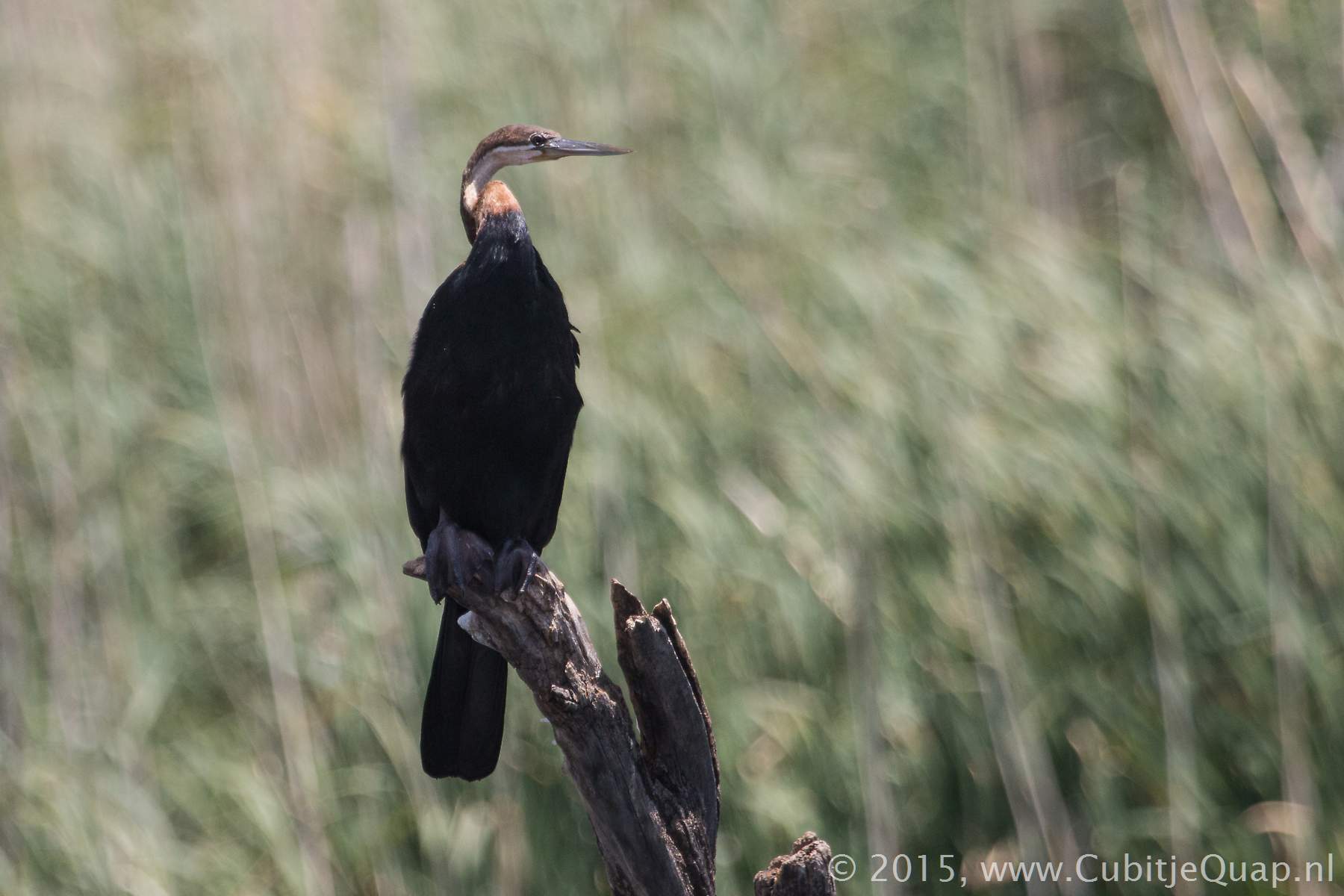Darter Information page
Description
Medium-sized, sinuous-necked, piscivorous waterbird. It pursues or ambushes fish while submerged, impaling fish with sudden forward thrust of the neck. Its dagger-like bill has a serated edge to hold onto slippery prey. Some small prey is swallowed under water, but larger prey is dislodged above the surface or even on land.When not hunting it swims very low in the water, usually only with head and neck exposed, looking vaguely snake-like.
Plumage is not completely waterproof, it is often seen sitting on perch with wings open, drying plumage and perhaps thermoregulating. It can fly well, often soaring to great heights. Due to synchronous wing molts individuals are rendered flightless for short periods. The legs are short and set far back for diving.
It is monogamous, usually breeding colonially in multi-species heronries. The male displays to the female by wing-waving - one wing at a time. The nest is defended from other birds that may steal nesting material, the nest is a bowl of sticks and vegetable debris. Eggs are grenish or whitish with a chalky surface. Incubation and care of young is done by both sexes. Incubatoin starts before the clutch is complete, leading to asynchronous hatching. Chicks are initially fed by regurgitation and then by inserting their bill into that of the adult.
Scientific names
Anhinga = local Amerindan word apparentlty meaning 'water turkey'Birds in this category
Interesting links
Wikipediafatbirder.com

